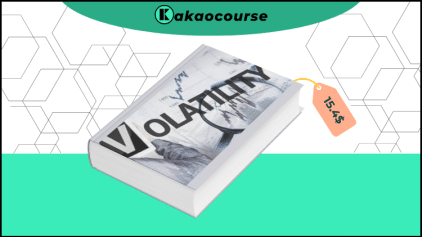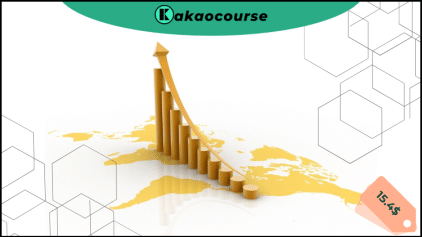Instant Download Fractal Flow Pro Trading Strategies 7 Courses Bundle – Here’s What’s Inside This Package:
Fractal Flow Pro Trading Strategies 7 Courses Bundle, Watch Our Free Video to Find Out More:
Fractal Flow Pro Trading Strategies 7 Courses Bundle, Grab Your Free PDF Sample Below:
Overview this course
Financial markets aren’t puzzles you “solve” once—they’re complex systems you learn to think with. Fractal Flow Pro Trading Strategies (7-Course Bundle) is built around that idea. Instead of handing you signals or cookie-cutter setups, this program develops your ability to reason about price through the lenses of econometrics, behavioral economics, and market microstructure. You’ll learn to separate noise from information, spot where traditional technical analysis misleads, and design rules that respect randomness while still allowing for edge.
Across seven integrated courses, you progress from conceptual foundations to practical strategy design and evaluation. The curriculum avoids hype and focuses on testable ideas: how supply and demand connect to price formation; how bias and incentives distort decisions; how to analyze patterns with statistical discipline; and how to translate all of that into trading rules you can measure and refine. The result is a toolkit that helps you build robust, evidence-based processes—not just for one market regime, but for many.
At a glance
-
Format: Seven structured courses with video lessons, readings, and applied exercises
-
Focus: Scientific reasoning, market complexity, disciplined strategy design, and risk framing
-
Tooling: Practical introductions to statistical testing, expectancy math, robustness checks, and data-informed iteration
-
Outcome: The ability to evaluate claims, build rules you can defend, and navigate uncertainty with confidence
Why should you choose this course?
-
Science over slogans. Learn how concepts from econometrics and behavioral economics clarify what price is (and isn’t) telling you—so your decisions aren’t guided by superstition.
-
Respect for randomness. Discover why many patterns fail out of sample, how to avoid overfitting, and how to design robust rules that survive changing volatility and structure.
-
Beyond surface-level technicals. You’ll get a balanced view of classical tools, where they break, and how to augment them with data-driven validation.
-
A framework you can reuse. The methodology applies across asset classes and timeframes; you’ll leave with checklists, metrics, and thinking patterns that scale with your ambitions.
-
Clear, actionable learning. Each idea is translated into exercises and decision flows, so theory becomes practice without losing rigor.
-
Independent, impartial teaching. The program focuses on education—not signals, not advice—so you can form your own view and defend it logically.
What You’ll Learn
You’ll build a cohesive mental model of markets and a practical approach for turning that model into rules you can test and operate. Expect a mix of short lessons, visual explanations, hands-on assignments, and reference templates.
Foundations: a scientific mindset for markets
-
Market complexity 101: Why prices look noisy, what “edge” really means, and how feedback loops, liquidity, and incentives shape behavior.
-
Behavioral drivers: Overconfidence, loss aversion, anchoring, and herd dynamics—how they appear on charts and how to guard against them in your process.
-
Econometrics in plain English: Stationarity, autocorrelation, sample size, and parameter stability—translated into trader decisions (not math for its own sake).
-
Expectancy & variance: Build intuition for positive expected value (EV), distribution of outcomes, and why the path of returns matters as much as the average.
Reading price through supply & demand
-
Structure over signals: Identify zones where liquidity is likely to aggregate, how auctions migrate, and when “breakouts” are actually re-pricing events.
-
Contextual layers: Volatility regime, time-of-day effects, session boundaries, and cross-asset influences that strengthen or weaken a setup’s logic.
-
Failure patterns: Why failed moves often carry more information than successful ones—and how to detect that “information” without forcing narratives.
Critical technical analysis
-
From pattern to hypothesis: Treat common formations (flags, ranges, reversals) as testable statements, not truths.
-
Indicator minimalism: What to keep, what to drop, and how to avoid collinearity traps that make a system look good in-sample and collapse later.
-
Multi-scale validation: If a pattern’s logic is real, some version of it should appear across instruments or neighboring timeframes—learn how to check.
Strategy design: from idea to rules
-
Rules before charts: Write entries, exits, and risk rules in unambiguous language first; only then translate to code or repeatable checklists.
-
Parameters with purpose: Bound ranges using market reasoning; pick step sizes that make sense; avoid “microwave-precision” tuning that overfits.
-
Position sizing & risk framing: Fixed-fractional vs. volatility-scaled sizing, stop placement logic (structural vs. volatility-based), and drawdown policies.
Testing & robustness
-
Clean data, clean claims: Understand survivorship bias, look-ahead bias, roll/split adjustments, and how to structure your backtests to avoid self-deception.
-
Out-of-sample discipline: Split data, walk-forward testing, and simple cross-checks that surface fragile assumptions.
-
Sensitivity analysis: Heat maps and parameter sweeps to find plateaus instead of single magic numbers; regime checks to see where a strategy actually lives.
-
Risk of ruin & durability: Translate test statistics into practical guardrails: max daily/weekly loss, de-risk triggers, and conditions for pausing a system.
From screen to execution
-
Checklists and pre-mortems: Define “what must be true” before you trade; list failure modes before they happen.
-
Journaling that matters: Track R-multiple, MAE/MFE, context tags, and decision quality—so improvements are data-backed, not vibe-based.
-
Operational cadence: Weekly reviews, change logs, and rule governance to ensure you iterate slowly and intelligently.
Capstone: build your evidence-based playbook
-
Draft a hypothesis document for one strategy, including economic rationale and behavioral premise.
-
Run a bounded backtest with clear data assumptions, then a small out-of-sample validation.
-
Produce a one-page runbook: instruments, session, triggers, risk parameters, exit logic, and conditions for standing down.
-
Present your findings: what held up, where it failed, and how you would improve it without curve-fitting.
Who Should Take This Course?
-
Serious traders ready to upgrade their reasoning. If you’ve traded long enough to see that “more indicators” isn’t the answer, this bundle replaces clutter with clarity.
-
System-curious discretionary traders. You like reading price, but you want rules you can measure and a process that protects you from bias.
-
Analytical learners and quants-in-progress. You want statistics translated into decisions, not buried in formulas—so you can move from theory to practice.
-
Portfolio builders. If your goal is a suite of uncorrelated strategies that survive regime shifts, you’ll learn how to test for robustness, not just returns.
Who might not be ready (yet)
-
If you’ve never encountered basic market concepts (order types, position sizing), start with an introductory course first.
-
If you’re looking for alerts, predictions, or a “get-rich” formula, this program isn’t that. It teaches process, not promises.
Conclusion
Edges don’t come from memorizing patterns; they come from thinking clearly about cause, effect, and uncertainty—then expressing that clarity as rules you can test. The Fractal Flow Pro Trading Strategies (7-Course Bundle) is your path to that level of clarity. You’ll learn how to frame hypotheses, verify them with simple but rigorous checks, and operate with safeguards that keep you in the game long enough for your competence to compound. You’ll leave with a scientific mindset, an honest toolkit, and a repeatable way to evaluate opportunities—market after market, year after year.
No matter your preferred timeframe or instrument, the principles you’ll practice—respect for randomness, insistence on evidence, and disciplined execution—are what separate durable processes from fragile ones. If you want to trade with confidence rooted in understanding rather than excitement, this is your next step.
Ready to start?
Enroll, open the first module, and begin building your evidence-based playbook—one hypothesis, one test, and one robust rule at a time.










Reviews
There are no reviews yet.